How do I add a stage gate?
Creating Stage Gates
Team members with edit or manage access to a grid can add and edit stage gates. To add a stage gate, you simply toggle the grid into edit mode and click the plus button to the right of the stage to which you want to add a gate.
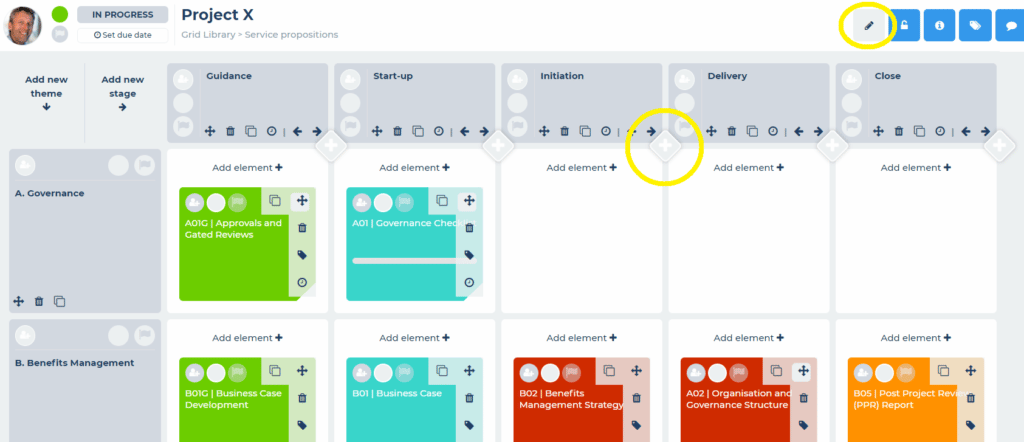
A stage gate will always indicate the stage with which it is associated at the top. In the example above and below, it is a stage gate attached to the Initiation stage (a stage gate between the Initiation and Delivery stages).
You can then add your own title for the stage gate below.
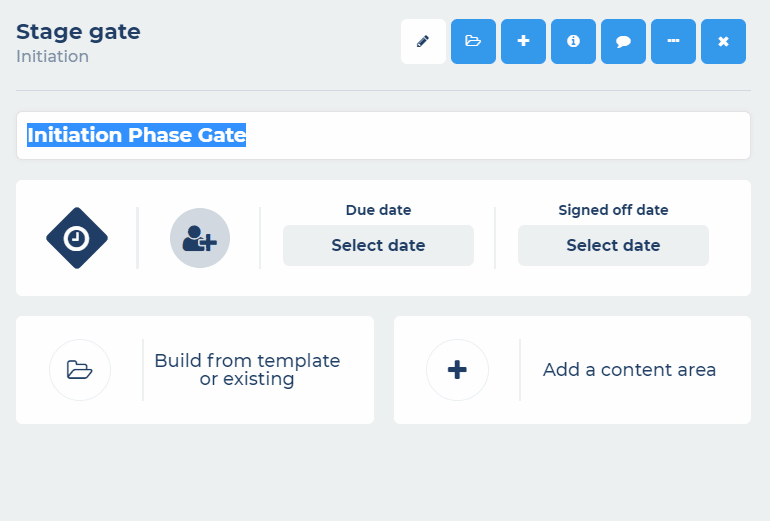
You can now build your gate by adding content areas in exactly the same way as you add content areas to your elements. Stage gates support all element areas including tasks. Your stage gate can be built out as a gate report with tasks assigned to key team members, you have complete flexibility as to the content and structure of your gate content. We have provided an example stage gate template which you can use to get started.
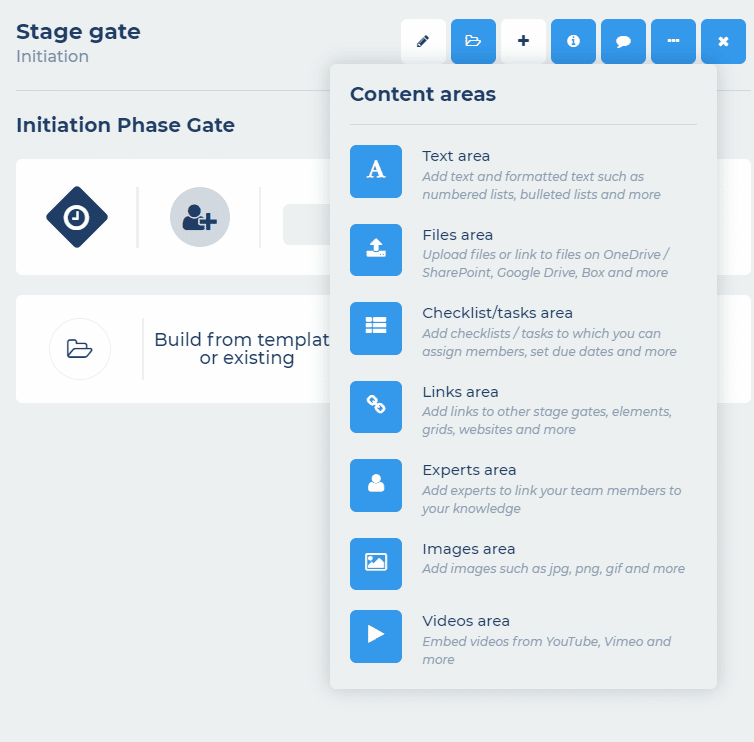
Once you have built out your stage gate content, you can then save this as a template for use in future stage gates in the same way as you can save and use element templates. To save your stage gate as a template, simply click the more button, name your template and click the tick to save. All your stage gate templates are available to review and edit alongside your element templates, click the lightbulb button in the main side navigation to view, edit and manage them account wide.
In the same way as building and working with elements, you can create stage gates by either:
- Starting with a blank stage gate and adding content areas to build it out
- Starting from an existing stage gate template
- Loading an existing stage gate and all its content
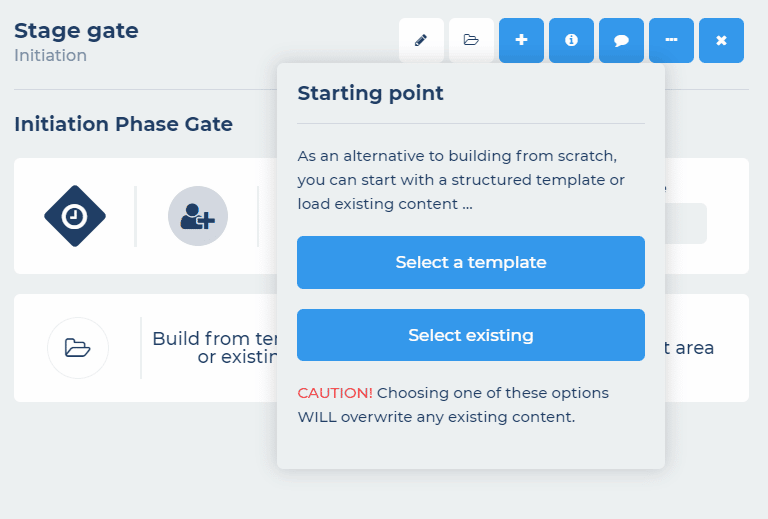
Once you have added stage gates to your grid, each time you clone that grid (for example if you are cloning a master methodology grid into a project instance grid), your stage gates and all their content will be cloned with your grid (in exactly the same way as your element content is cloned). Your project delivery grid is then ready to use complete with your methodological content, document templates and stage gate controls.
Managing Stage Gates
Team members with view access to the grid can view and interact with stage gates in the same way that they can view and interact with elements i.e. they can view the content and complete tasks assigned to them and tasks that are unassigned.
Team members with edit or manage access to the grid can also edit the stage gate content, assign members, set due dates, set a sign off date and update the outcome.
Stage gates can be managed in a similar way to elements within your grid. Stage gates have the same shared features:
Tasks
Task areas can be used to add and manage any tasks associated with the gate. Tasks within stage gates have exactly the same features as tasks within elements e.g. you can comment on them, track their status and progress, add them to your calendar, assign them, add due dates, reminders etc.

Comments
You can comment on stage gates in the same way as commenting on elements.
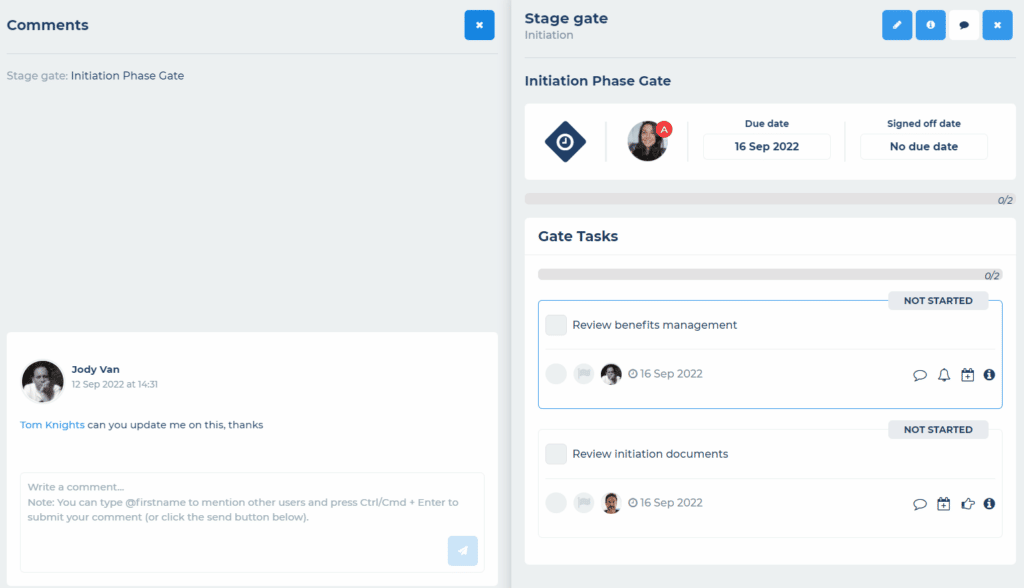
Information
Stage gates also include additional summary information, a shareable link and a full activity log so you can monitor all associated activity.
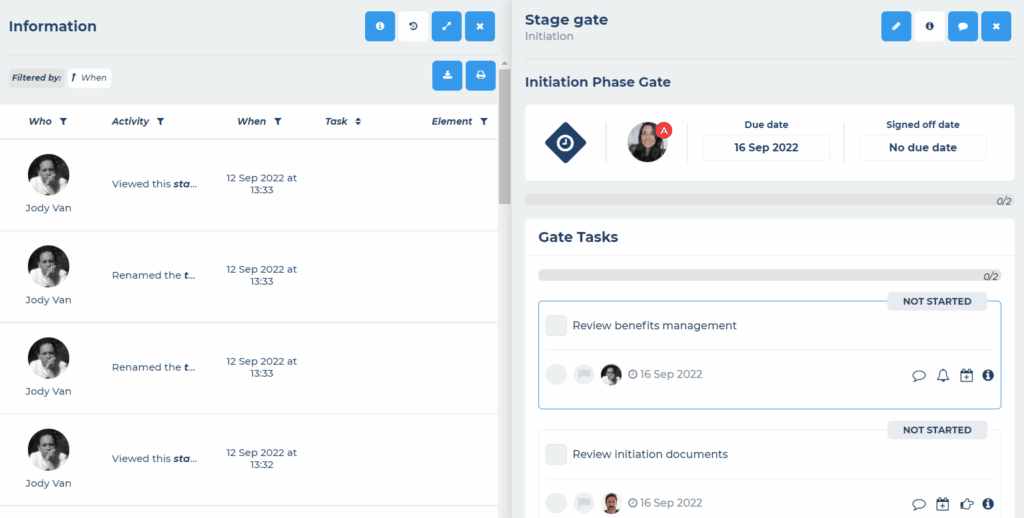
Outcome
You can also monitor the progress of your stage gates by updating/reviewing the current outcome:
- Pending
- On hold
- Conditional pass
- Pass
- Failed
A gate is only considered to be completed when it has the outcome of either conditional pass, pass or failed.
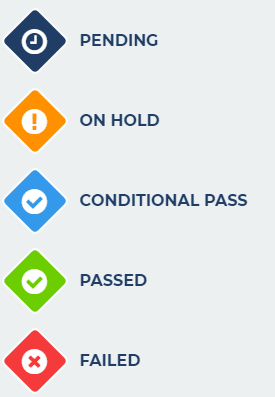
Completing Stage Gates
To complete a stage gate there must be:
- A team member assigned (the team member responsible for the gate sign off)
- A signed off date (when this gate was signed off)
The stage gate can then have its outcome set. The outcomes that set the stage gate as completed are:
- Conditional pass
- Pass
- Failed
Stage gates in progress can be set to either:
- Pending
- On hold
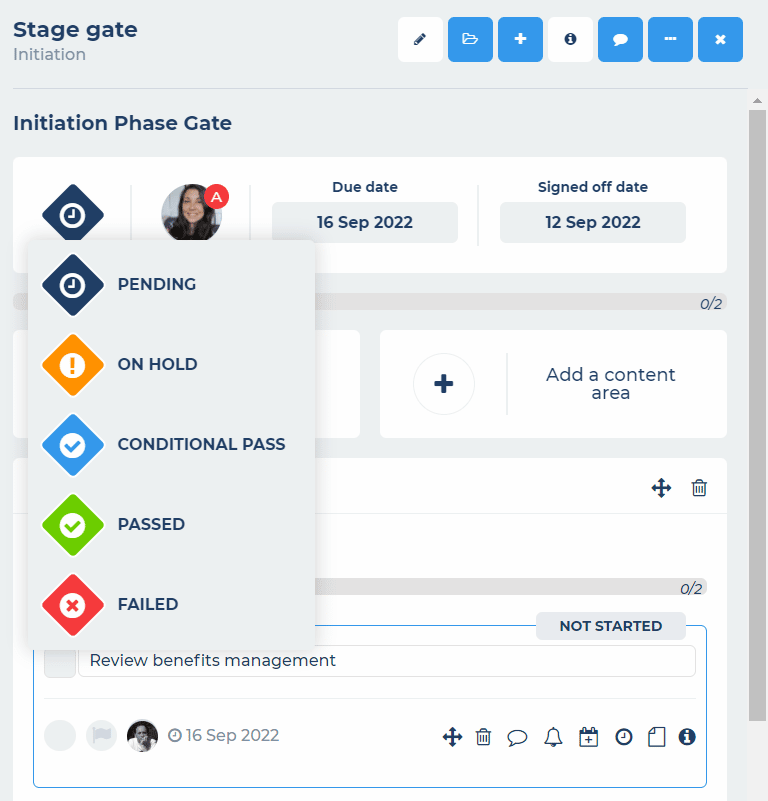
The completed stage gate can then be retained and reviewed as part of your assurance process. The assurance record is retained with the content in your stage gate (your review report), tasks completed (plus their RAG status if set), the member that signed the gate off, the date it was signed off and its outcome.